Breathe Deep, Sweat Naturally: The Outdoor Wood Burning Sauna Advantage
Rediscovering the Ritual of Wood-Fired Wellness
Imagine stepping into a warm, cedar-lined haven in the middle of your backyard, the scent of burning wood mingling with fresh forest air. An outdoor wood burning sauna isn’t just a luxury; it’s a return to centuries-old traditions that promote health, clarity, and deep relaxation.
As modern life speeds up, many Americans aged 30 to 60 are slowing down—seeking ways to enhance their physical well-being and mental clarity. One of the most powerful ways to do that? Sweating it out in nature with the primal energy of fire. This guide walks you through why outdoor wood burning saunas are making a powerful comeback, their health benefits, installation insights, maintenance tips, and how to choose the perfect one for your lifestyle.
What Is an Outdoor Wood Burning Sauna?
An outdoor wood burning sauna is a self-contained heat therapy retreat designed for open-air environments, typically placed in a backyard, lakeside property, or mountain cabin setting. It is built using high-quality softwoods like western red cedar, Nordic spruce, or thermally modified wood, chosen for their durability, natural resistance to moisture and decay, and ability to withstand extreme temperature changes.
The sauna generates heat through a wood-burning stove, which uses firewood to heat up a bed of sauna stones. Once the desired temperature is reached, water can be ladled over the stones to create steam, elevating humidity and enhancing the sauna’s therapeutic effects. This combination of high heat and added steam mimics the traditional Finnish sauna experience, offering both dry and moist heat depending on user preference.
Unlike electric or infrared saunas, which rely on electricity and advanced technology, wood burning saunas appeal to purists and wellness enthusiasts who value the ritualistic, sensory-rich experience of tending a fire, watching smoke curl up through a chimney, and hearing the hiss of steam rising from hot stones.
Key Components:
- Wood-burning stove – The heart of the sauna, typically made from durable stainless steel or cast iron, designed to safely contain fire and heat the room efficiently.
- Sauna stones – Placed on top of the stove, these retain and radiate heat. When doused with water, they generate the classic löyly (steam burst) effect.
- Ventilation system – Ensures proper air circulation and oxygen flow, critical for safety and comfort.
- Insulated wooden structure – Crafted with tongue-and-groove panels to trap heat and moisture, while remaining breathable enough to prevent mold or mildew.
- Chimney or flue – Channels smoke safely out of the sauna, often made from stainless steel to resist rust and withstand high temperatures.
Types of Outdoor Wood Burning Saunas:
- Barrel Saunas: These are among the most popular options due to their efficient design and aesthetic appeal. The barrel shape improves heat circulation and minimizes airspace, making them quicker to heat and ideal for smaller backyards.
- Cabin Saunas: Built in a more square or rectangular footprint, these resemble rustic cottages and offer more interior space, making them perfect for families or group use. They can include changing rooms or lounges as part of the design.
- Panoramic Saunas: A modern take on tradition, these saunas feature large glass walls or windows that provide uninterrupted views of your outdoor surroundings. They’re ideal for scenic locations like lakesides, forests, or mountain retreats and are designed to blur the line between nature and wellness.
Each style offers a unique experience, and your choice should reflect your space, aesthetic preference, and how immersive you want your sauna sessions to feel.
Why Choose a Wood Burning Sauna Over Electric or Infrared?
Choosing between wood burning, electric, or infrared saunas often comes down to personal preference and lifestyle. But for those seeking a deeper connection with nature, a more authentic experience, and greater independence from the grid, a wood burning sauna offers unmatched advantages.
1. Authentic Experience
Nothing compares to the ritual of building a fire with your own hands, watching flames flicker and dance, and listening to the satisfying hiss of steam as water meets hot stones. A wood burning sauna awakens the senses: the earthy scent of wood smoke, the subtle crackling of burning logs, and the glow of firelight all contribute to a rich, grounding experience. It’s not just about heat—it’s about reconnecting with something primal and therapeutic.
2. Off-Grid Capability
For those who enjoy cabin getaways, rural retreats, or aspire to reduce their reliance on utilities, wood burning saunas are an excellent fit. They require no electricity, which makes them perfect for off-grid living, eco-conscious households, and remote installations. Even during power outages or in locations with limited infrastructure, your sauna remains fully functional with just a stack of dry wood and a match.
3. Deeper, Natural Heat
Wood-fired saunas excel in delivering high, consistent, and evenly distributed heat. Temperatures can reach between 180°F and 200°F, which is ideal for those who enjoy a deep, purifying sweat. The radiant heat from the stones penetrates the skin and muscles more thoroughly than infrared waves, creating a more intense and immersive thermal experience. This natural heating method has been trusted for centuries in Nordic cultures, and for good reason—it simply feels better.
4. Cost Efficiency Over Time
While the initial installation may require a larger investment in terms of structure and stove setup, the operational costs are often lower over time. You won’t be racking up electricity bills or dealing with circuit upgrades. Firewood—especially if sourced locally or gathered sustainably—can be a very affordable and renewable resource. For many owners, heating with wood becomes a cherished ritual that’s both cost-effective and rewarding.
Health Benefits of Outdoor Wood Burning Saunas
Time-honored and supported by modern science, the health benefits of regular sauna use are significant and wide-ranging. When combined with the grounding ambiance of nature and the deep, penetrating heat of a wood-fired sauna, the wellness effects are even more impactful.
Detoxification
Sweating is the body’s built-in detox mechanism, and saunas are one of the most effective ways to activate it. The high temperatures inside a wood burning sauna stimulate sweat glands, increasing the release of stored toxins through the skin. This includes heavy metals like lead, arsenic, and mercury, as well as synthetic chemicals such as BPA and phthalates commonly found in plastics and household products.
A 2012 study in the Journal of Environmental and Public Health found that sweat can be a more efficient pathway for eliminating certain toxins than urine, making sauna use a critical addition to any detox regimen.
When you pair the natural heat of firewood with outdoor air, the result is a full-body cleanse that leaves you feeling lighter, clearer, and more energized.
Cardiovascular Health
Sitting in a hot sauna causes your heart rate to rise, blood vessels to dilate, and circulation to improve, mimicking the effects of low- to moderate-intensity cardio. Over time, regular sauna use has been shown to improve endothelial function, lower resting heart rate, and reduce blood pressure.
A 2018 longitudinal study in JAMA Internal Medicine reported that individuals who used a sauna 4 to 7 times per week had a 50% lower risk of sudden cardiac death and a 48% reduction in the risk of fatal coronary heart disease compared to those who used it once a week.
The wood-fired sauna takes this even further, with radiant heat that envelops the body more deeply and naturally than electrical alternatives.
Stress Reduction and Mental Clarity
In today’s fast-paced world, chronic stress is a hidden epidemic. Stepping into an outdoor wood burning sauna invites you to disconnect from devices, breathe deeply, and recalibrate. The rhythmic crackling of fire, the enveloping heat, and the absence of artificial light signal the brain to enter a more relaxed state.
Sauna bathing has been shown to lower cortisol (the primary stress hormone), increase endorphins, and elevate mood. This often results in better sleep, sharper focus, and improved resilience to daily stressors.
When surrounded by nature, these benefits are amplified—what researchers call the “biophilic effect,” where natural environments reduce mental fatigue and support emotional regulation.
Immune Support
The intense heat of a sauna induces a temporary rise in core body temperature, similar to a fever. This “artificial fever” stimulates the production of heat shock proteins and white blood cells, both of which enhance immune defense.
Regular sauna use has been linked to fewer colds, faster recovery times, and improved resistance to common infections. It’s a natural way to keep your immune system alert and ready without pharmaceuticals.
Muscle Recovery and Joint Pain Relief
Whether you’re a fitness enthusiast or simply prone to stiffness from sitting or aging joints, the heat from a wood burning sauna can provide significant relief. Increased circulation helps flush out lactic acid and brings fresh oxygen to tired muscles.
For those with arthritis, fibromyalgia, or chronic pain, the warmth soothes inflammation and improves flexibility. Unlike medications, sauna therapy carries no side effects and promotes long-term joint health.
Combined with cold exposure—such as a quick rinse or snow roll—sauna use becomes part of a powerful recovery cycle that professional athletes and physical therapists have embraced for years.
🔨 Build Your Backyard Escape Today
Looking to elevate your wellness routine with nature-powered heat? Imagine stepping out your back door into a private retreat where the scent of firewood, the sound of crackling logs, and the enveloping warmth of a handcrafted sauna await you. Whether you're starting your day with intention or ending it with deep relaxation, a wood burning sauna brings the spa experience home.
At InfiniteSauna, we offer a curated collection of outdoor wood burning barrel saunas—each designed to deliver authentic heat, aesthetic beauty, and years of reliable performance. From compact 2-person models to panoramic designs with scenic views, there's a style to match every space and lifestyle.
👉 Browse our collection of Outdoor Wood Burning Barrel Saunas and take the first step toward building your own at-home wellness sanctuary.

Choosing the Right Wood for Your Sauna
The type of wood you select for your sauna is more than just an aesthetic decision—it has a major impact on heat performance, air quality, safety, and durability. High-quality sauna woods are softwoods with low thermal conductivity, meaning they absorb heat without getting too hot to the touch. They also need to be resilient against moisture, expansion, and decay.
What to Look For:
- Low resin content – Prevents sticky buildup and reduces off-gassing at high temperatures.
- Aromatic qualities – Contribute to the overall sensory experience.
- Dimensional stability – Maintains shape and performance despite humidity and temperature swings.
- Mold and mildew resistance – Essential for longevity in steamy conditions.
Top Choices:
Western Red Cedar
One of the most prized sauna woods, Western Red Cedar is known for its rich, warm aroma that enhances the relaxing atmosphere. It's naturally rot- and insect-resistant, making it ideal for outdoor conditions. Cedar also has excellent thermal insulation, ensuring the benches remain comfortable to sit on even at high temperatures. Its stunning reddish hue and grain patterns add an upscale, rustic charm.
Nordic Spruce
A popular and cost-effective choice, especially in traditional Finnish sauna designs. Nordic Spruce features a pale, clean appearance that lends itself well to minimalist aesthetics. It offers strong resistance to warping, is lightweight, and maintains integrity in fluctuating climates. While not as aromatic as cedar, it delivers reliable performance and durability.
Thermally Modified Wood
Thermowood, or thermally modified wood, undergoes a heat-treatment process that improves its moisture resistance and dimensional stability. This makes it an eco-friendly alternative that is ideal for high-humidity sauna environments. Thermowood resists mold, bacteria, and decay without the need for chemical preservatives, making it a great choice for health-conscious users.
Woods to Avoid:
- Pressure-Treated Lumber – Contains chemicals that can emit harmful fumes when heated.
- Pine or Softwoods with High Resin Content – Tend to weep sap at high temperatures and release strong, often unpleasant odors. They may also warp or degrade more quickly over time.
When you choose the right sauna wood, you’re investing in comfort, longevity, and a truly immersive wellness experience. Don’t cut corners here—your choice of wood is just as important as your stove or layout.
Installing Your Outdoor Wood Burning Sauna
Setting up an outdoor wood burning sauna requires thoughtful planning and preparation to ensure both safety and performance. Here’s a step-by-step breakdown of how to bring your backyard wellness retreat to life.
Step 1: Select the Location
Start by choosing a level, stable area in your yard that is well-drained and away from standing water. For safety and proper ventilation, your sauna should be placed at least 10 feet away from other structures like homes, garages, or fences. If you live in a wooded area, ensure nearby trees and branches are trimmed to prevent fire hazards and allow room for chimney clearance.
Consider privacy, views, and accessibility. A location near a cold plunge tub or outdoor shower can enhance the experience. If you’re in a colder climate, proximity to your main building can make winter use more convenient. Also consider prevailing wind direction and sunlight exposure—both can impact your comfort and usability throughout the year.
Step 2: Prepare the Foundation
Your sauna needs a strong and stable base to sit on. Foundation options include:
- Concrete pad – Offers a long-lasting and level surface that is resistant to ground shifts and moisture.
- Gravel base – Provides excellent drainage and is easy to install without heavy equipment. Often the preferred choice for natural settings.
- Concrete pavers – A balance between aesthetics and function, these can support the sauna while allowing some drainage.
- Built-in wood decks or platforms – Ideal if integrating the sauna into an existing outdoor living space, such as near a pool or patio area.
Some barrel saunas come with pre-fitted cradles that simplify placement and elevate the sauna slightly off the ground. Regardless of foundation type, be sure the base is completely level to prevent future structural issues and to ensure doors and benches align correctly.
Step 3: Assemble the Structure
Most modern outdoor saunas arrive in a flat-pack kit with pre-cut, pre-drilled wood panels. Assembly usually requires two people and takes between 8 to 16 hours, depending on the size and complexity of the model.
Basic tools such as a power drill, screwdriver, rubber mallet, spirit level, and ladder are typically sufficient. It’s important to carefully follow the manufacturer’s manual—especially when sealing joints, fitting panels, and installing the door frame.
Ensure all tongue-and-groove panels are properly aligned and seated. Misalignments can lead to air leaks, heat loss, or long-term warping. Take your time during this phase, especially when working on the roof or curved walls of barrel saunas.
Pro tip: Plan to build on a dry, clear day to avoid weather delays or complications. If you’re in a humid area, store sauna wood in a sheltered space before installation to prevent warping.
Step 4: Install the Stove and Chimney
Your wood-burning stove is the powerhouse of your sauna, and its installation must be done with precision. Always follow the manufacturer’s instructions, and if needed, consult a professional for chimney assembly and flue configuration.
Key considerations include:
- Clearances: Maintain safe distances between the stove and surrounding wood or benches using heat shields if required.
- Airflow: Position the stove to allow even heat distribution. Floor-level air intake and ceiling-level venting support optimal circulation.
- Combustion safety: Use fireproof mats under the stove and heat-resistant flashing around the chimney’s roof exit point.
- Chimney height: Ensure the chimney extends far enough above the roofline to prevent smoke buildup and ensure proper draft.
A correctly installed chimney will minimize smoke backdraft and maximize combustion efficiency, allowing your sauna to heat faster and maintain high temperatures.
Step 5: Cure the Sauna
Before you invite friends or step in for your first sweat, you’ll need to run the sauna at full temperature for a few hours. This initial burn-off helps remove any manufacturing residues, natural wood oils, or treatment smells that may linger from production or shipping.
- Open all vents and windows if applicable to allow gases and odors to escape.
- Monitor the stove and chimney for smoke leaks or unusual behavior.
- Inspect all seams, joints, and gaskets for proper sealing.
Curing not only ensures a safe and pleasant experience, but also gives you a chance to familiarize yourself with your sauna’s heat-up time, wood consumption, and stove response. After curing, your sauna will be fully ready for regular use—offering that signature blend of heat, aroma, and restorative calm that only a wood-fired sauna can deliver.
How to Use an Outdoor Wood Burning Sauna
Getting the most from your outdoor sauna involves more than just heating it up. A proper sauna session is a mindful practice—a cycle of warming, sweating, and cooling that supports both physical and mental wellness. Here’s how to create an experience that’s both safe and deeply restorative.
🔥 Step-by-Step Sauna Session
1. Prep the Fire
Start by preparing your stove with dry, seasoned hardwoods such as oak, maple, or birch. These woods burn cleanly and efficiently, producing consistent heat and minimal smoke. Avoid softwoods or resinous woods like pine, as they produce more creosote and unpleasant odors.
Light the fire well before your intended session, giving the sauna time to gradually heat up. Depending on the size of your unit and weather conditions, this can take anywhere from 30 to 60 minutes. During this time, keep an eye on the fire, gradually adding logs to build and maintain a steady burn.
2. Wait for Heat
Your target temperature range should be between 150°F to 200°F. Use a sauna thermometer to monitor the rise in temperature and determine when the space is ready. You’ll know you’re getting close when the air feels comfortably dry and the sauna stones are radiating strong, even warmth.
If you enjoy a burst of humidity, begin ladling small amounts of water over the hot sauna stones once the desired temperature is reached. This creates steam—known in Finnish as löyly—that intensifies the sensation of heat and opens pores quickly.
3. Enter and Relax
Once the sauna is ready, step inside wearing a towel or lightweight robe. Sit or lie down on one of the benches, allowing your body to gradually acclimate to the heat. Most people begin on the lower bench and move up once their body adjusts.
As you relax, your heart rate will rise slightly and you’ll begin to sweat. Keep your breathing slow and deep to support relaxation. If using essential oils like eucalyptus or lavender, add a drop or two to your water ladle to enhance the aromatherapy effect when poured over stones.
4. Cool Down
After 10 to 20 minutes, or whenever you begin to feel overheated, exit the sauna and cool down. This is a critical part of the sauna cycle that stimulates circulation and strengthens the immune response. You can:
- Take a cold shower
- Rinse with a garden hose
- Plunge into a cold tub or nearby body of water
- Simply step into fresh air and rest
Allow your body temperature to return to normal before reentering. This cooldown phase promotes contrast therapy, helping to reduce inflammation, improve mood, and reset your nervous system.
5. Repeat
Complete 2 to 3 full cycles of heating and cooling for maximum effect. Most full sauna sessions last between 45 to 90 minutes, including breaks. Listen to your body—don’t push past comfort or safety.
Pro Tips for a Better Session:
- Hydrate before and after with water or electrolyte-rich drinks.
- Bring a towel to sit on and another for drying off.
- Remove metal jewelry before entering as it may heat up quickly.
- Avoid heavy meals beforehand for better circulation and comfort.
The ritual of using a wood burning sauna is a journey of both body and mind. Embrace the rhythm, disconnect from screens, and give yourself permission to fully unwind in the warmth of nature and fire.
Maintenance and Safety Tips
A well-maintained sauna will last for decades, retain its beauty, and provide a consistently safe and enjoyable experience. Maintenance for a wood burning sauna involves regular cleaning, seasonal inspections, and basic safety practices.
Regular Tasks:
Clean Out Ash Weekly
After every few uses, remove the ash from the firebox using a metal scoop or ash shovel. Accumulated ash can restrict airflow, reduce stove efficiency, and cause unnecessary wear on your stove. Always wait until ashes are completely cold before handling them, and dispose of them in a non-combustible container.
Wipe Down Benches After Use
Sweat and moisture can soak into the wood if left unattended. Use a damp cloth or sponge to wipe down benches, backrests, and any surfaces you came in contact with. This keeps the sauna clean, fresh-smelling, and free of bacteria or mould.
Air Out the Sauna After Each Session
Once your session is over and the stove has cooled down, open the door or vents to allow fresh air to circulate. This helps release trapped moisture, prevent mildew, and maintain the integrity of the wood structure over time.
Seasonal Checks:
Inspect the Chimney for Blockages
Check for creosote buildup, bird nests, leaves, or other obstructions in your chimney. Use a chimney brush or hire a certified sweep at least once per season, especially in fall and spring.
Reseal Wood as Needed
Depending on your climate and exposure, reseal the exterior of the sauna with a natural, breathable wood sealant every 1 to 2 years. Avoid sealing the interior, as sauna-grade woods are designed to breathe and handle moisture naturally.
Check Door Alignment and Hinges
Fluctuating heat and humidity can subtly shift your door’s position. Make sure doors close snugly, latches are secure, and hinges are properly tightened to prevent heat from escaping during sessions.
Safety Tips:
Keep a Fire Extinguisher Nearby
Place a dry chemical fire extinguisher rated for wood fires in a visible, accessible location. Check the pressure gauge and expiration date regularly.
Never Leave the Fire Unattended
Always monitor your stove while it's burning. Don’t leave the property or go to sleep while a fire is still active. Once your session is over, ensure all embers are safely extinguished.
Educate Household Members on Proper Use
If others in your home plan to use the sauna, walk them through fire-starting procedures, ventilation protocols, and basic safety rules. Post a quick-reference guide inside the sauna for peace of mind.
A small amount of regular care can go a long way in preserving the safety, performance, and enjoyment of your outdoor wood burning sauna for years to come.
FAQs About Outdoor Wood Burning Saunas
How long does it take to heat up?
Most wood burning saunas take 30 to 60 minutes to reach optimal temperature.
How much wood does it use?
Expect to burn 3 to 6 logs per session, depending on the size and insulation.
Can I use it in winter?
Absolutely. In fact, winter use enhances circulation and offers a uniquely invigorating experience.
What about smoke?
Proper ventilation and chimney design ensure minimal smoke. Always use dry, seasoned hardwood.
Fire, Nature, and Wellness in Harmony
An outdoor wood burning sauna is more than a heat therapy tool—it’s a statement. A commitment to slow living, wellness, and the therapeutic power of nature. Whether you’re easing sore muscles, boosting your immune system, or simply unwinding after a long day, few rituals are as satisfying or rejuvenating.
Ready to bring this experience home?
Take the guesswork out of finding your perfect sauna setup.
👉 Use our Sauna Quiz to discover the best outdoor sauna for your needs.

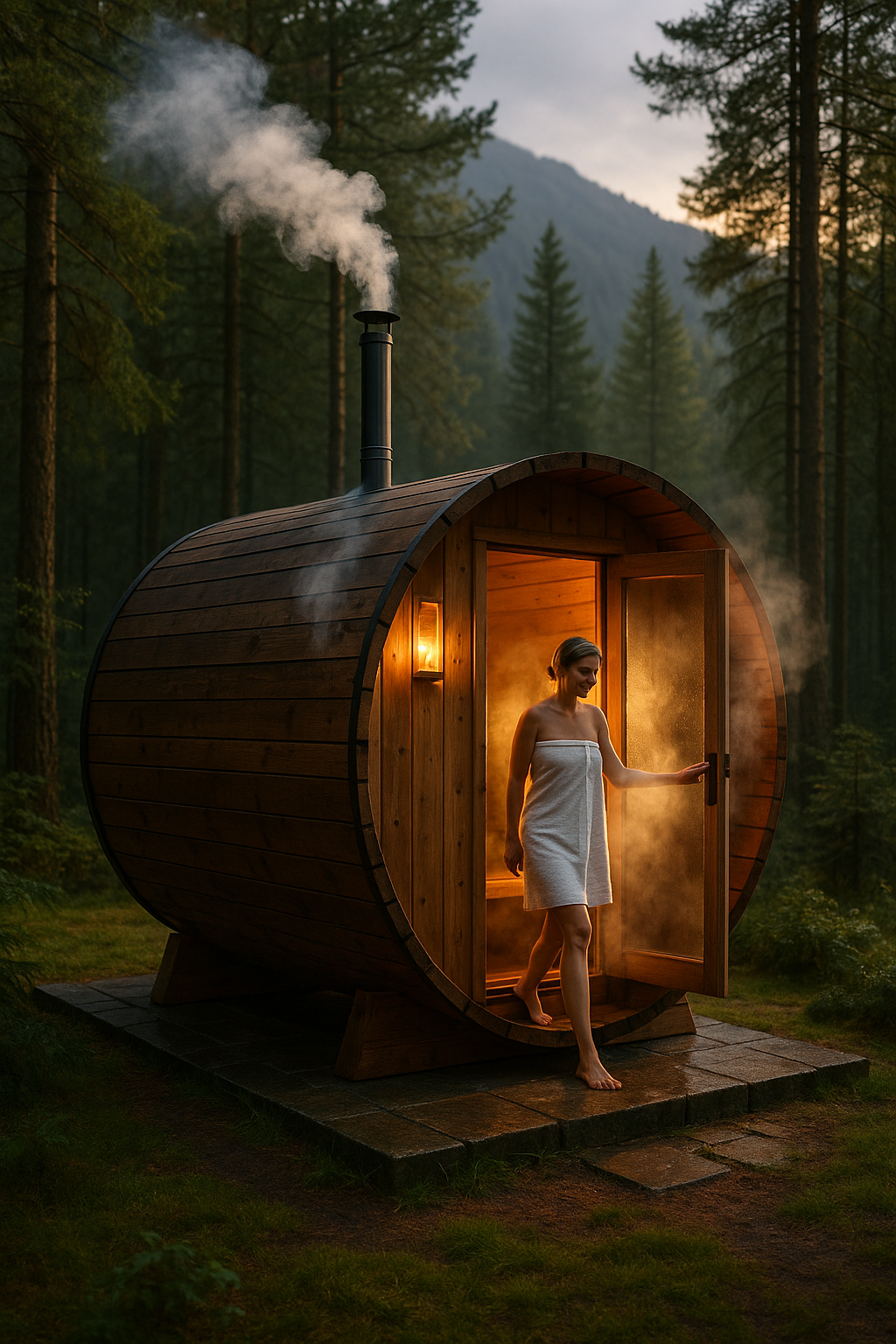
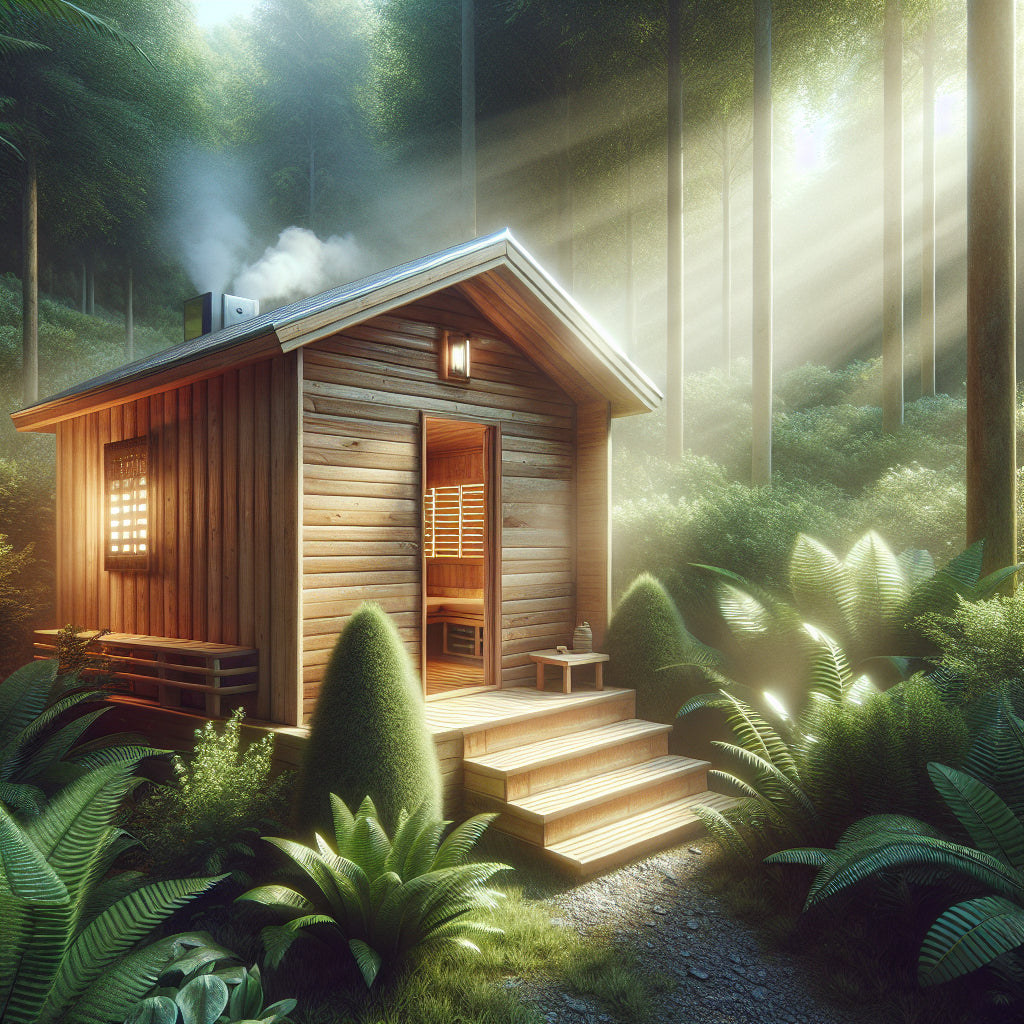
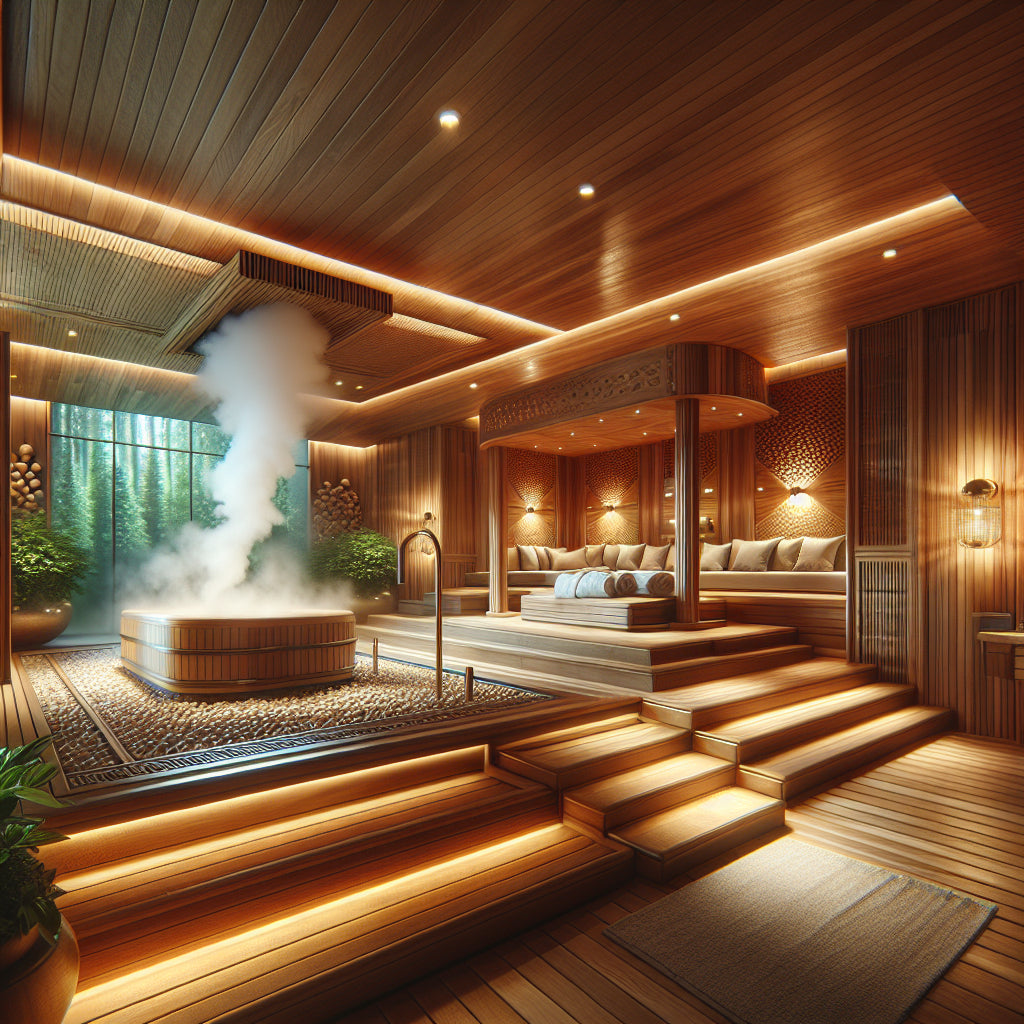
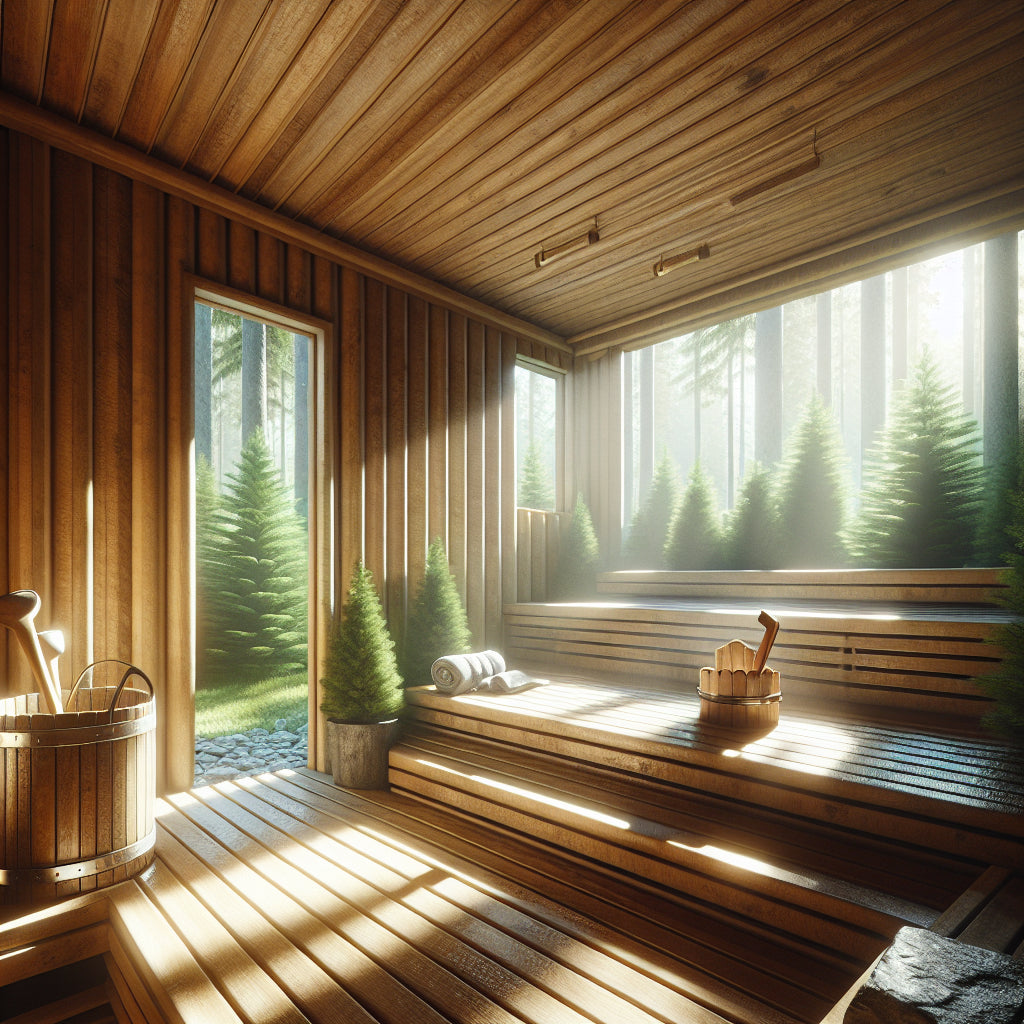
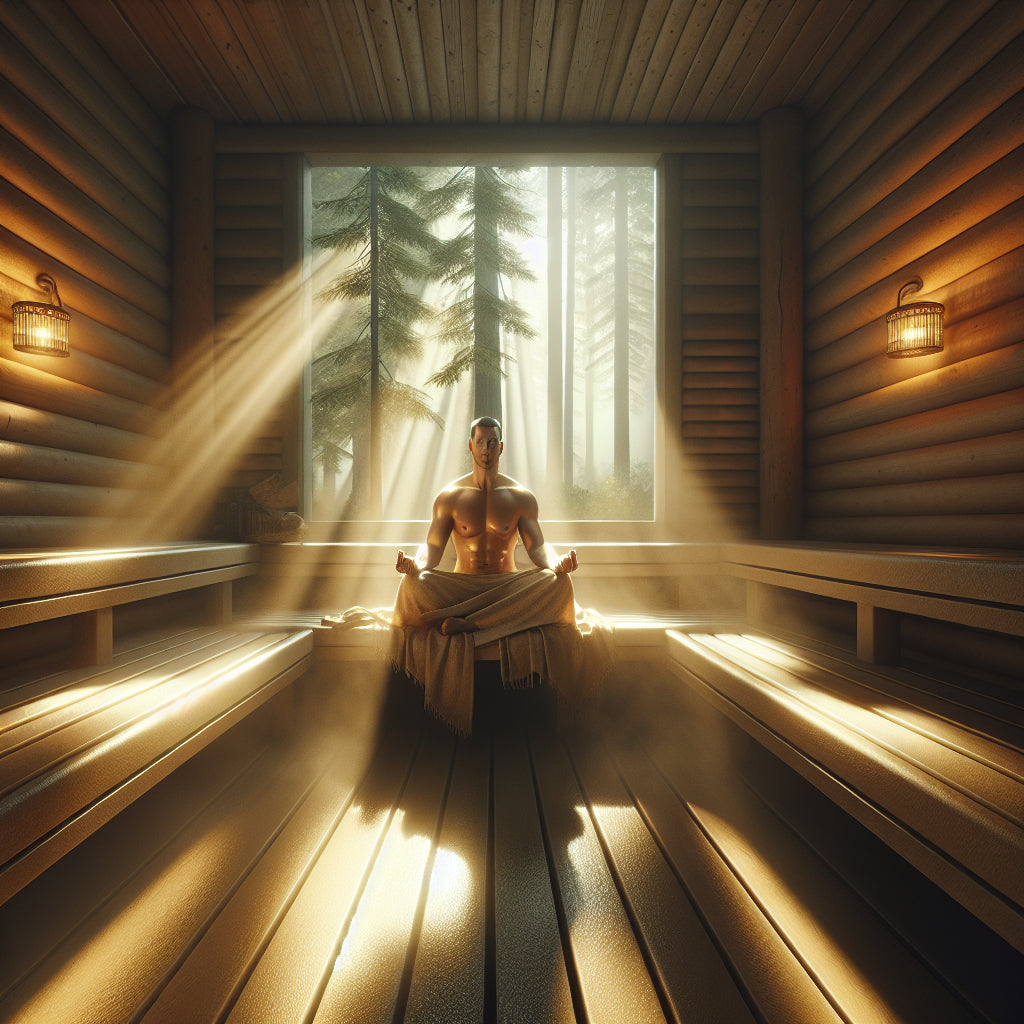
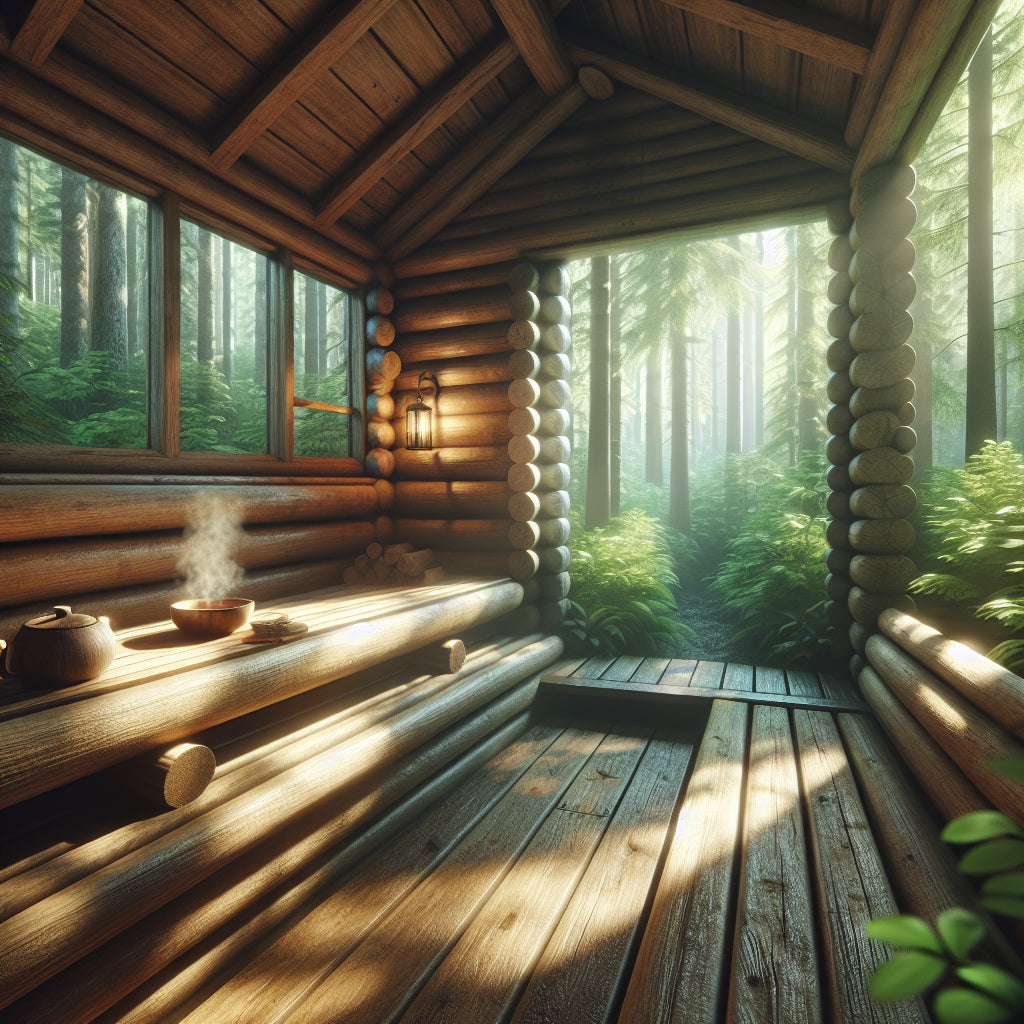
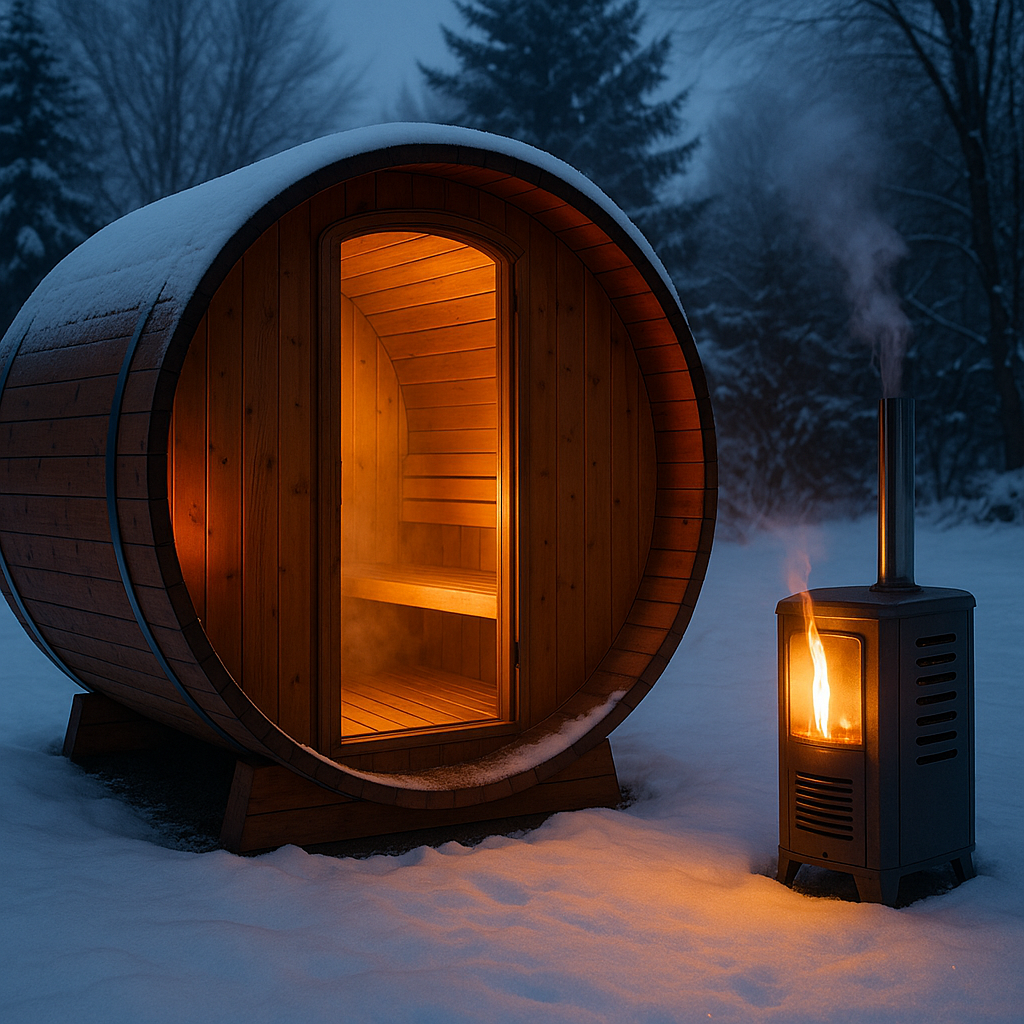
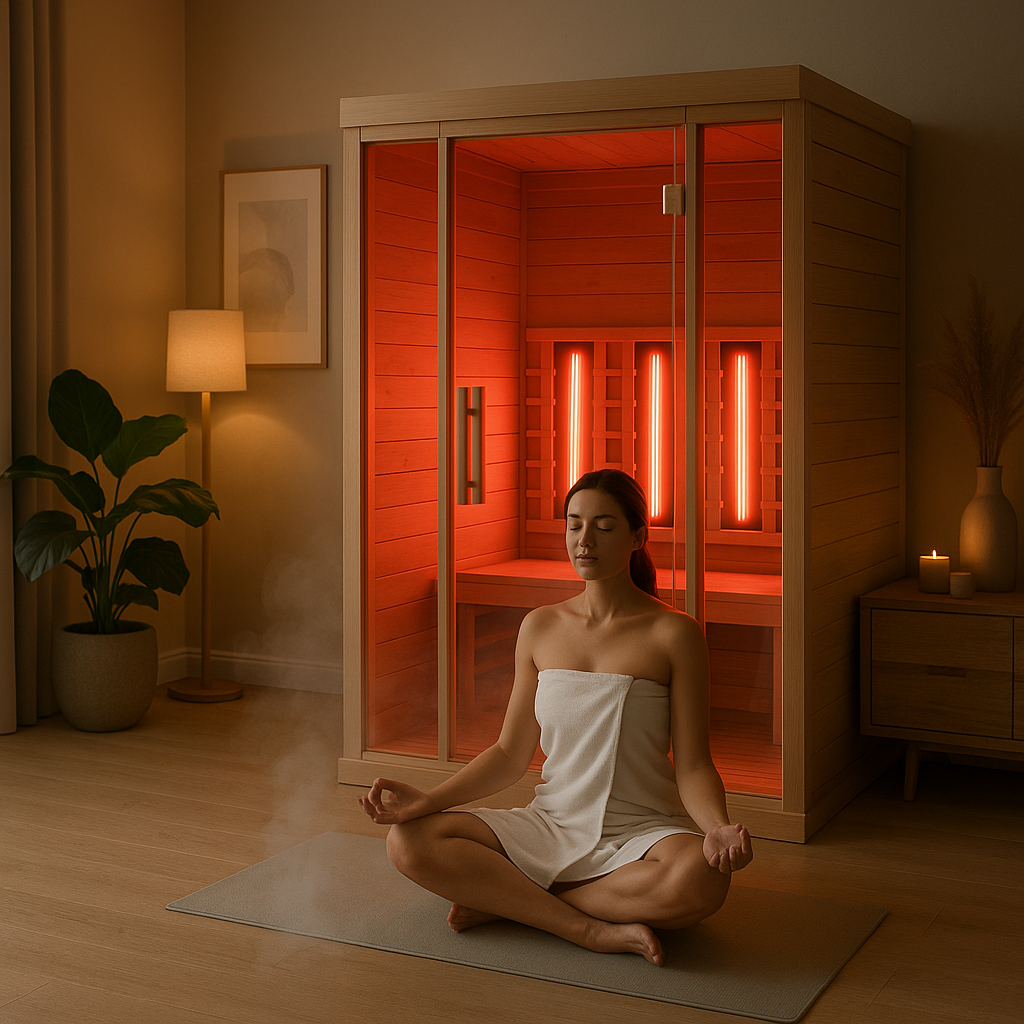
Leave a comment
This site is protected by hCaptcha and the hCaptcha Privacy Policy and Terms of Service apply.